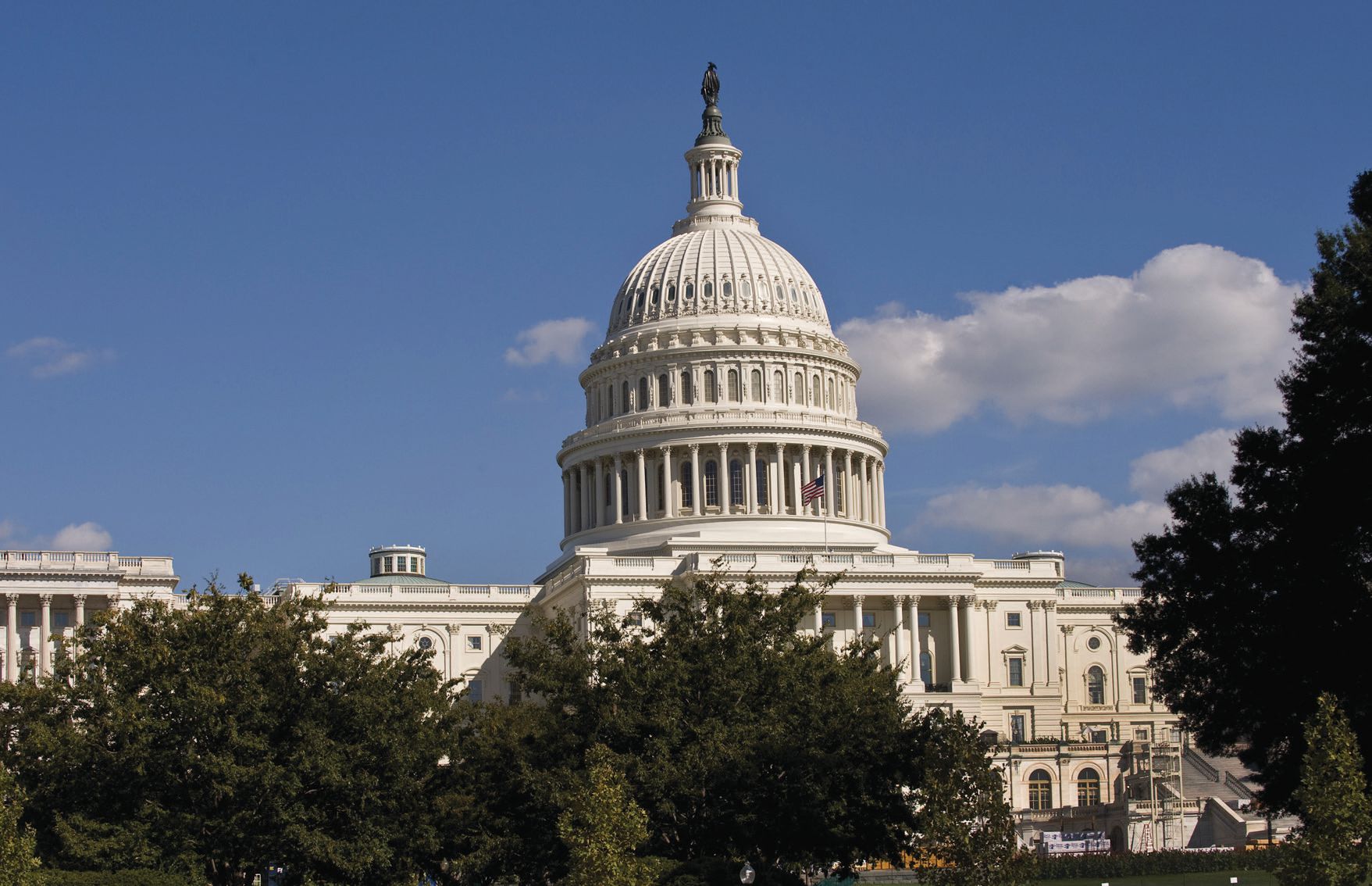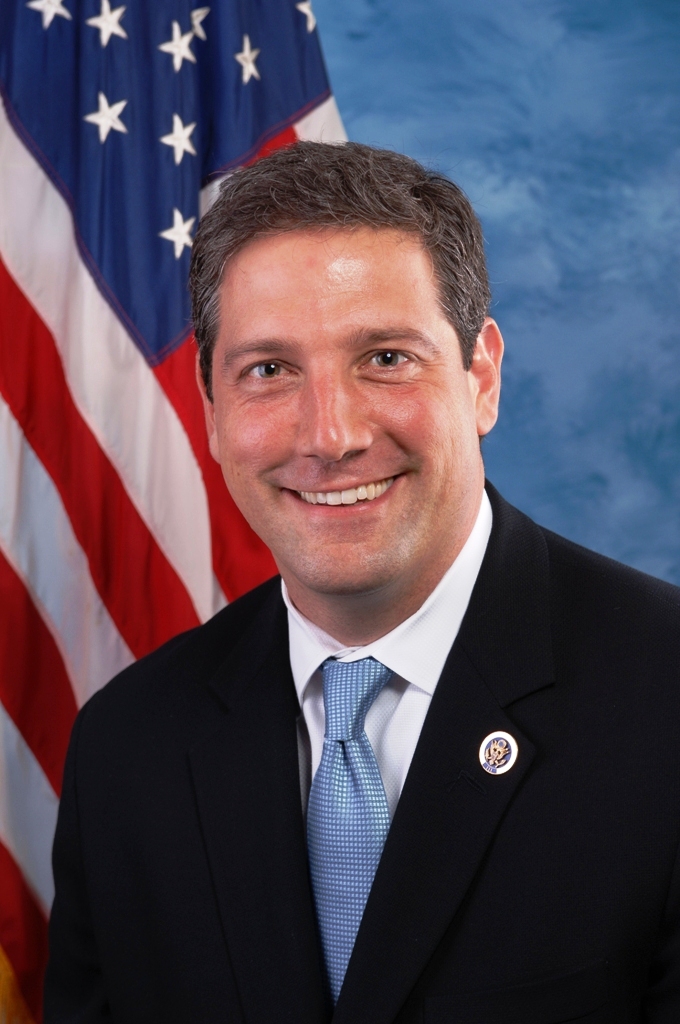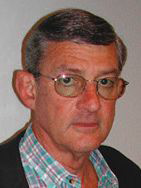A Vote For Tribology
Dr. Robert M. Gresham, Contributing Editor | TLT Lubrication Fundamentals November 2016
STLE’s advocacy for the role of our science has led to the steps of the Capitol Building.

© Can Stock Photo Inc. / mcgill
IN YEARS PAST I’VE RUMINATED ON THE DIFFICULTY of explaining to a person not in our industry what tribology is. This is especially challenging if, for ex- ample, you are riding a ski lift and only have 10 minutes or a cocktail party with people milling around, short attention span, alcohol, etc. Those difficulties remain.
Tribology surrounds us in literally everything we do. Tribology is the science of surfaces that rub together—friction and wear processes. Tribologists worry about the friction of an eyelid over a contact lens, the force involved in raising a drawbridge, reducing friction to improve fuel efficiency in cars, the friction of human skin (think blisters), artificial joint construction, wire ropes used in elevators and ski lifts, how insects climb walls and ceilings—the list is endless.
These kinds of problems have been with us since the very beginning: using friction to start a fire, lubricating chariot wheels, overcoming friction to move stones to build pyramids, etc. And these kinds of problems are still with us. They impact every aspect of not only our personal lives but also our societal lives as electrical power supply, water supply, safety and security.
Most gadgets and machines that we wholly take for granted often had serious tribology problems to overcome before they were useable by society. OK, I expect you have all heard this kind of thing before. Yet, what are we to do on that metaphorical ski lift or cocktail party?
As I hope you know from articles in TLT and postings on www.stle.org, some years ago STLE’s board of directors initiated a strategic plan for the society. One of the tenants of that plan is for STLE to be a global advocate for tribology. In terms of major initiatives, this has manifested itself through sharing our emerging trends report at various conferences in Europe and Asia and, of course, on www.stle.org.
STLE sometimes hosts workshops after our annual meeting, and a recent one focused on promoting research funding by the National Science Foundation (NSF). Another, which is still ongoing by Advanced Research Program Administration-Energy (ARPA-E), is to save a quadrillion BTUs of energy from the 100 quads that we consume in the U.S. annually. Currently in a second ARPA-E effort still in the planning stage, we have begun working with Dr. Carlton Reeves, an STLE member who works for ARPA-E. His goal is to identify ways to speed up the research-to-market process for commercializing innovations that can reduce our dependence on energy with the objective of understanding whether ARPA-E should fund a program around high-impact transformative tribological innovations. The focus of this effort is to save energy in ground transportation, power generation, aviation, manufacturing and metalworking, functional fluids and lubricants and simulation and modeling.
This summer we also have worked with long time STLE Honorary Member Dr. Said Jahanmir, who—as an ASME Congressional Fellow—is on assignment with the U.S. House of Representatives, Office of Congressman Tim Ryan (OH-13), promoting engineering R&D, engineering education, manufacturing policy and issues related to the Maker Movement. Part of Jahanmir’s mission is to be an advocate for science and engineering, including tribology as an enabling science for innovation. Jahanmir has recommended that we develop a resolution on tribology to be approved by Congress. Such approval thus provides guidance for funding agencies such as the EPA, NSF, etc., that Congress considers tribology to be a key discipline for making the U.S. competitive in a broad number of areas, including clean energy, manufacturing, transportation (higher efficiency and lower emissions), defense, pollution (water and air), worker safety and health and the U.S. water supply. We have developed modern verbiage in resolution form (thanks again, Said!) on why tribology is important in today’s society and the breadth of its impact. The timing for this one is pretty much as soon as possible so that Congress can vote before the end of its current session. We will need a little luck here; passing anything in Congress is never simple or easy.
 STLE Honorary Member and ASME Congressional Fellow Dr. Said Janhanmir is on assignment with the office of U.S. Rep. Tim Ryan.
Clearly STLE is working hard on the global advocacy part of our STLE strategic plan. We certainly hope and are optimistic we will be successful. While these efforts will clearly have impact, I’m still struggling with the sound bites for a ski lift or cocktail party.
THE TRIBOLOGY RESOLUTION
Congressman Tim Ryan (OH-13), jointly with Congressman Dan Lipinski (IL-03), have introduced a House of Representatives resolution to emphasize the impact of tribology on the U.S. economy and competitiveness and to highlight the need for increased R&D investment in tribology. This resolution is awaiting committee approval before going for a congressional vote.
Following is the resolution in full:
RESOLUTION
OFFICIAL NUMBER H.RES.916 BY CONGRESS
Recognizing the impact of tribology on the United States economy and competitiveness in providing solutions to critical technical problems in manufacturing, energy production and use, transportation vehicles and infrastructure, greenhouse gas emissions, defense and homeland security, health care, mining safety and reliability, and space exploration, among others, and recognizing the need for increased research and development investments in tribology and related fields.
Whereas tribology is a branch of science and engineering encompassing scientific disciplines related to the controlling of friction, reduction of wear loss, and development and application of novel lubrication strategies;
Whereas almost every aspect of our lives is impacted by technologies that benefit from the ability to control friction and wear loss;
Whereas approximately a third of the world’s primary energy consumption is attributed to friction, and about 70 percent of equipment failures is blamed on lubrication breakdown and wear loss;
Whereas loss of energy to friction and material losses due to wear in mechanical systems such as internal combustion and gas turbine engines account for huge economic and environmental burdens;
Whereas finding ways to minimize friction and wear through new technologies in tribology can have an enormous impact on the economy;
Whereas improving durability of goods and equipment has a dramatic impact on reducing our demand for finite resources such as raw materials;
Whereas proper application of tribology principles reduces energy usage, lowers the cost of maintenance and replacement, and increases reliability;
Whereas new solid lubricants and biodegradable and synthetic lubricants developed from fundamental research are critical to a greener and more sustainable future;
Whereas improvements in manufacturing productivity and efficiency enabled by reduction of friction and wear loss are crucial to our economic competitiveness;
Whereas energy conservation and successful generation of clean energy, such as with wind turbines, rely on principles of tribology;
Whereas reduction of friction is at the very core of improving fuel economy and reducing greenhouse gas emissions;
Whereas safety, reliability, and durability of mechanical products and systems have critical implications on our global reputation with respect to trade and exported goods;
Whereas reduction of friction and increasing durability of artificial joints, prosthetics, and implants are crucial to maintaining quality of life for veterans and the aging population;
Whereas tribology is used to improve everyday personal care products such as toothpaste, skin creams, and hair products;
Whereas tribology principles are crucial to our national defense and homeland security through the use of lighter-weight weapon systems, more efficient and safe operation in a wide range of environments, higher reliability, longer life, and reduced maintenance;
Whereas scientific understanding of friction and wear loss improves maintenance and reliability of the Nation’s transportation infrastructure, resulting in a better return on public funding and gains in public safety;
Whereas mining safety and reliability and durability of mining equipment can be improved through proper use of tribology;
Whereas reliability, function, and durability of outer space mechanisms and rockets are essential for future space missions; and
Whereas the enormous potential of tribology in solving global challenges is hampered by limited investments in research, thus limiting innovations in new materials and lubrication technologies: Now, therefore, be it
Resolved, That the House of Representatives—
(1) recognizes the impact of tribology on the United States economy and competitiveness;
(2) recognizes the importance of tribology in providing solutions to critical technical problems in manufacturing, energy production and use, transportation vehicles and infrastructure, greenhouse gas emissions, defense and homeland security, health care, mining safety and reliability, and space exploration, among other sectors;
(3) encourages Federal agencies to develop and implement programs and projects related to tribology;
(4) encourages the formation of public-private partnerships to advance fundamental research and accelerate the development of tribology-related products and technologies;
(5) recognizes the need for increased research and development investments in tribology and related fields; and
(6) encourages the National Academy of Engineering to conduct a comprehensive survey of the status of research and development in academia and government laboratories and recommend a course of action to accelerate innovations in tribology.
STLE Honorary Member and ASME Congressional Fellow Dr. Said Janhanmir is on assignment with the office of U.S. Rep. Tim Ryan.
Clearly STLE is working hard on the global advocacy part of our STLE strategic plan. We certainly hope and are optimistic we will be successful. While these efforts will clearly have impact, I’m still struggling with the sound bites for a ski lift or cocktail party.
THE TRIBOLOGY RESOLUTION
Congressman Tim Ryan (OH-13), jointly with Congressman Dan Lipinski (IL-03), have introduced a House of Representatives resolution to emphasize the impact of tribology on the U.S. economy and competitiveness and to highlight the need for increased R&D investment in tribology. This resolution is awaiting committee approval before going for a congressional vote.
Following is the resolution in full:
RESOLUTION
OFFICIAL NUMBER H.RES.916 BY CONGRESS
Recognizing the impact of tribology on the United States economy and competitiveness in providing solutions to critical technical problems in manufacturing, energy production and use, transportation vehicles and infrastructure, greenhouse gas emissions, defense and homeland security, health care, mining safety and reliability, and space exploration, among others, and recognizing the need for increased research and development investments in tribology and related fields.
Whereas tribology is a branch of science and engineering encompassing scientific disciplines related to the controlling of friction, reduction of wear loss, and development and application of novel lubrication strategies;
Whereas almost every aspect of our lives is impacted by technologies that benefit from the ability to control friction and wear loss;
Whereas approximately a third of the world’s primary energy consumption is attributed to friction, and about 70 percent of equipment failures is blamed on lubrication breakdown and wear loss;
Whereas loss of energy to friction and material losses due to wear in mechanical systems such as internal combustion and gas turbine engines account for huge economic and environmental burdens;
Whereas finding ways to minimize friction and wear through new technologies in tribology can have an enormous impact on the economy;
Whereas improving durability of goods and equipment has a dramatic impact on reducing our demand for finite resources such as raw materials;
Whereas proper application of tribology principles reduces energy usage, lowers the cost of maintenance and replacement, and increases reliability;
Whereas new solid lubricants and biodegradable and synthetic lubricants developed from fundamental research are critical to a greener and more sustainable future;
Whereas improvements in manufacturing productivity and efficiency enabled by reduction of friction and wear loss are crucial to our economic competitiveness;
Whereas energy conservation and successful generation of clean energy, such as with wind turbines, rely on principles of tribology;
Whereas reduction of friction is at the very core of improving fuel economy and reducing greenhouse gas emissions;
Whereas safety, reliability, and durability of mechanical products and systems have critical implications on our global reputation with respect to trade and exported goods;
Whereas reduction of friction and increasing durability of artificial joints, prosthetics, and implants are crucial to maintaining quality of life for veterans and the aging population;
Whereas tribology is used to improve everyday personal care products such as toothpaste, skin creams, and hair products;
Whereas tribology principles are crucial to our national defense and homeland security through the use of lighter-weight weapon systems, more efficient and safe operation in a wide range of environments, higher reliability, longer life, and reduced maintenance;
Whereas scientific understanding of friction and wear loss improves maintenance and reliability of the Nation’s transportation infrastructure, resulting in a better return on public funding and gains in public safety;
Whereas mining safety and reliability and durability of mining equipment can be improved through proper use of tribology;
Whereas reliability, function, and durability of outer space mechanisms and rockets are essential for future space missions; and
Whereas the enormous potential of tribology in solving global challenges is hampered by limited investments in research, thus limiting innovations in new materials and lubrication technologies: Now, therefore, be it
Resolved, That the House of Representatives—
(1) recognizes the impact of tribology on the United States economy and competitiveness;
(2) recognizes the importance of tribology in providing solutions to critical technical problems in manufacturing, energy production and use, transportation vehicles and infrastructure, greenhouse gas emissions, defense and homeland security, health care, mining safety and reliability, and space exploration, among other sectors;
(3) encourages Federal agencies to develop and implement programs and projects related to tribology;
(4) encourages the formation of public-private partnerships to advance fundamental research and accelerate the development of tribology-related products and technologies;
(5) recognizes the need for increased research and development investments in tribology and related fields; and
(6) encourages the National Academy of Engineering to conduct a comprehensive survey of the status of research and development in academia and government laboratories and recommend a course of action to accelerate innovations in tribology.
 Bob Gresham is STLE’s director of professional development. You can reach him at rgresham@stle.org.
Bob Gresham is STLE’s director of professional development. You can reach him at rgresham@stle.org.